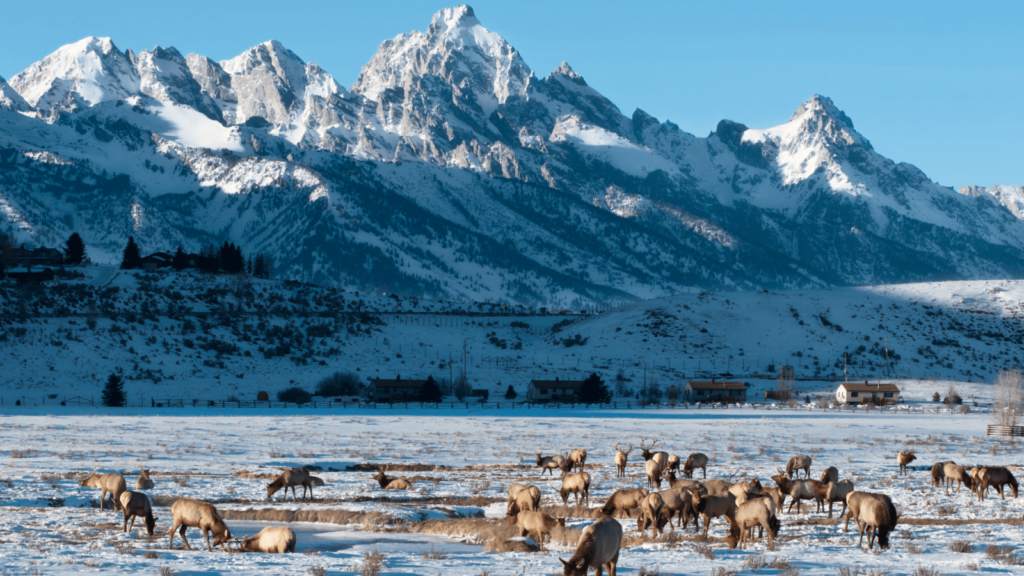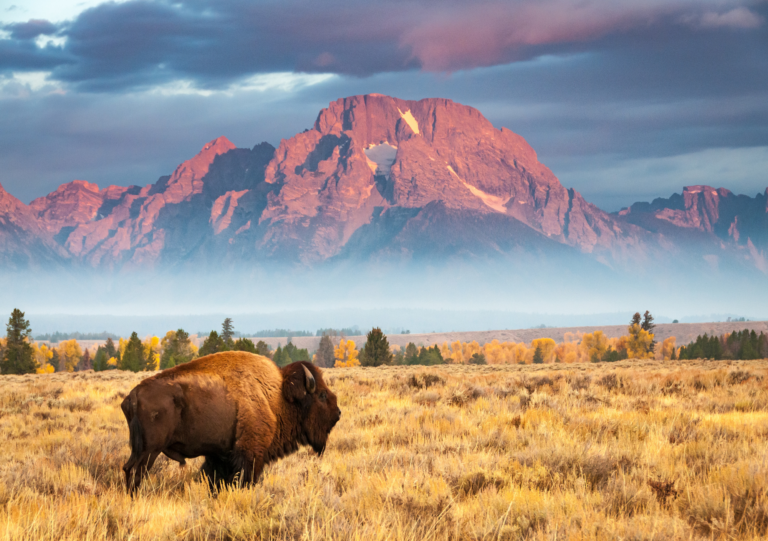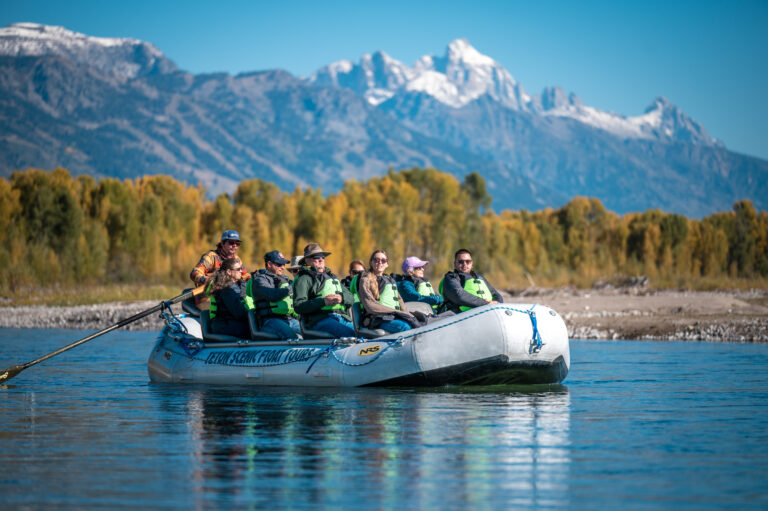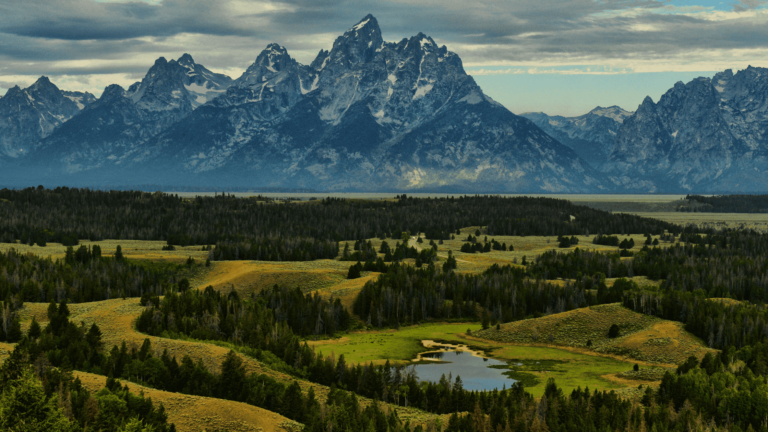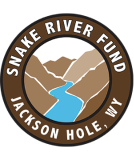Nestled within the stunning landscapes of Jackson Hole, Wyoming, the Snake River area is home to a remarkable array of wildlife. From the graceful deer that roam the valleys to the powerful raptors that grace the skies, this region is a natural sanctuary teeming with diverse animal species. In this blog, we’ll take a closer look at the animals that call the Snake River home, exploring their habitats and roles within this unique ecosystem. Whether you’re a nature enthusiast or simply curious about wildlife viewing, this guide will provide you with a glimpse into the fascinating world of creatures that thrive in the Snake River region.
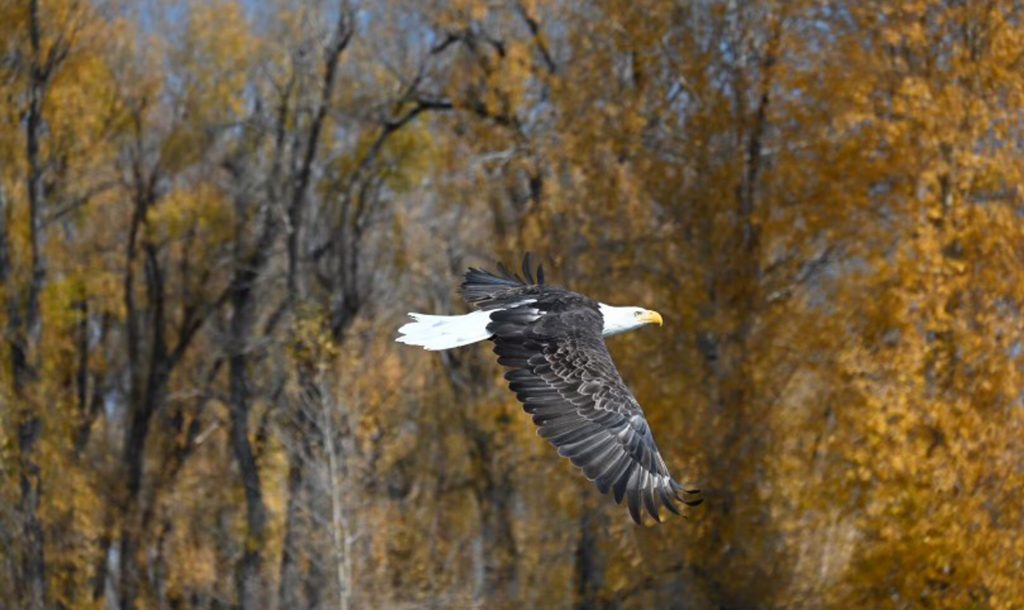
Ungulates
Ungulates are a classification of mammals that are usually large and have hooves. In the Greater Yellowstone Ecosystem, which encompasses both Grand Teton National Park and Jackson Hole, the most common ungulates are elk, deer, moose, and bison. While these wild animals share similarities, they are also unique in their own ways! Travelers visit from all around the world for a chance to spot one of these magnificent creatures in their natural habitat. Check out our tips for respecting Grand Teton Wildlife! Elk play a prominent role in the rich and diverse ecosystem of the Snake River, as they graze along river banks and through valleys. In the summertime, they usually migrate higher into the mountains to search for food and escape the warm summer sun. In the winter, they return to the valley, where many spend the snowy months in the National Elk Refuge.
Deer follow a similar pattern as elk, residing along the Snake River and Teton Mountains in the summer, before moving to more hospitable ground for the winter. Studies have tracked deer anywhere from 10 miles all the way to 150 miles away from their summer grounds. Some common winter areas include the West side of the Teton Range in Idaho and the Wind River Range and watershed.
Moose, arguably some of the travelers’ favorite Jackson Hole wildlife, stay close to the Snake River and its tributaries for both summer and winter months. These majestic creatures thrive off riparian habitats, making the banks of the Snake River the perfect home. A male moose can weigh up to 1,000 pounds and stand more than seven feet tall. Their long legs help wade in the water and travel through deep snow.
Bison are the largest land mammal in North America but despite their size, these animals can reach speeds up to 30 miles an hour! From the grasslands, bison feed primarily off grasses found in the valleys carved by the Snake River. In the winter, they use their large head to move snow and access vegetation.
Birds
Riparian zones like the Snake River are home to a wide variety of birds including bald eagles, trumpeter swans, pelicans, Redtail hawks and more! From the Wilson Bridge to the South Park Bridge, this section of the Snake River boasts more Bald Eagles than any other section of the river. This section of river is fed by many natural spring creeks creating an abundance of bug life benefiting the fish and the bald eagles. The majestic bald eagle mates with one partner for life, so it is common to see a male and a female flying together or perched in the same tree. While floating down the Snake River, it is common to see bald eagles or hawks dive into the water and emerge victorious with a trout dinner!
Aquatic Life
The Snake River holds a healthy population of fish, including Mountain Whitefish and the Famous Snake River Fine Spotted Cutthroat Trout. This special trout got its name because it is only found in the Snake River and nowhere else in the world! These cutthroat trout thrive in the cool, clear water and braided river channels. Other parts of the Snake River in Idaho hold different times of trout, including Rainbow and Brown Trout.
Beavers are semiaquatic herbivores that enjoy the benefits of land and water. They move from land where they collect sticks and tree limbs to then build their homes in the water. The Snake River creates an ideal habitat for beavers because the banks are lined with Cottonwood, Willows and other types of trees that beavers utilize.
Otters are another unique species found in the Snake River. While it is less common to see otters than beavers, they are easily identified with longer, narrower bodies. Otters are nocturnal, so it is most common to see them swimming and playing at sunrise or sunset.
Predators
The Snake River in Grand Teton National Park and surrounding areas is home to one of the most iconic and awe-inspiring species of the American wilderness – bears. Both black bears and grizzly bears inhabit this diverse ecosystem. Bears can be encountered throughout the park, particularly along the riverbanks, in dense forests and alpine meadows. Grizzly bears are larger than black bears, but both types are considered predators. These iconic Jackson Hole animals roam the valleys and rivers in the summer, foraging for food before setting in for a winter long hibernation. Although bears generally keep their distance from humans, it is important to follow proper safety precautions when traveling in bear country!
Wolves are another famous predator in the Greater Yellowstone Ecosystem. While wolves generally do not travel along the southern parts of the Snake River, this elusive animal is iconic to the area and the American West. Wolves have a complicated history with humans, including their reintroduction into the area to restore the natural balance of the ecosystem. These predators play a pivotal role in controlling herbivore populations, thereby influencing vegetation dynamics, and promoting biodiversity. Conservation initiatives continue to support the coexistence of wolves and the diverse array of species that call the Snake River region home.
These animals only touch the surface of the vast Jackson Hole wildlife, while playing a key role in the biodiversity of the ecosystem. Each animal is unique and carries out complex relationships with neighboring species. With the proper resources and knowledge, visitors can experience the wonders this area has to offer, all while maintaining a safe and respectful relationship with the wildlife that calls this area home! Join us for a Snake River scenic float trip or Jackson Hole fly fishing trip on the Snake River to view the wildlife in Jackson.

